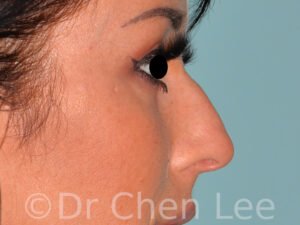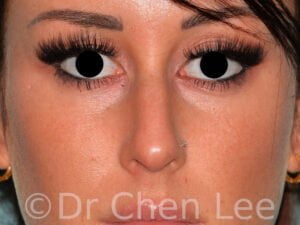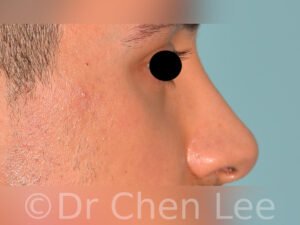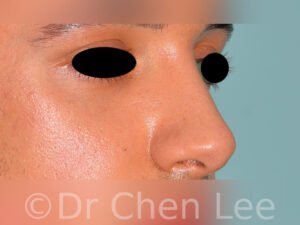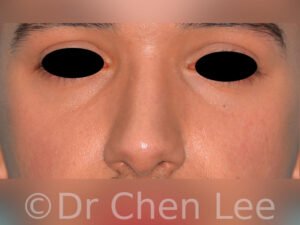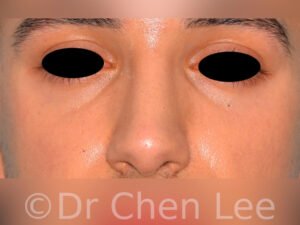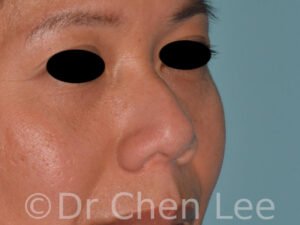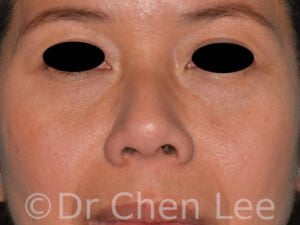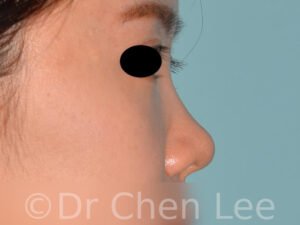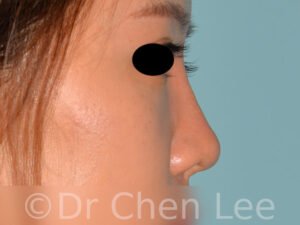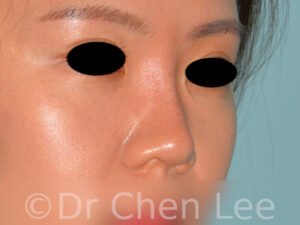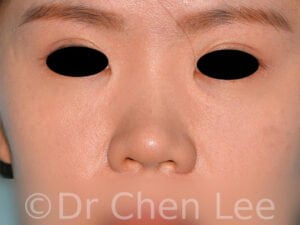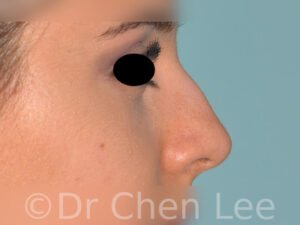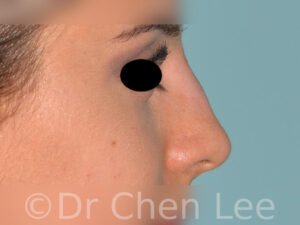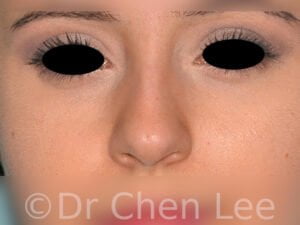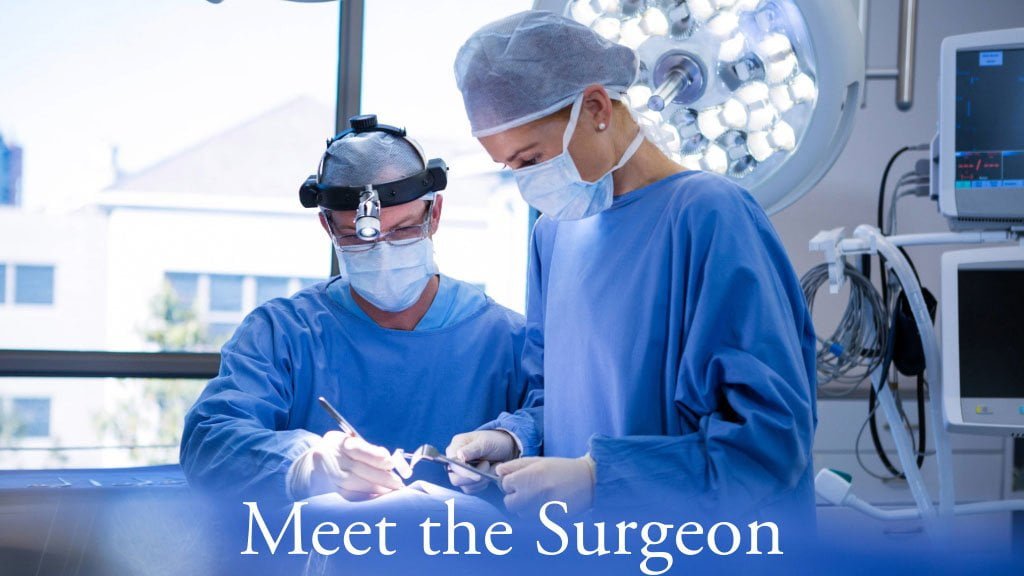Non-Surgical Rhinoplasty
Non-surgical rhinoplasty is performed by injection of hyaluronic acid. It is a novel alternative to nose surgery.
Non-Surgical Rhinoplasty – The Essentials
During your consultation about hyaluronic acid nose injections, we will discuss the technique, risk of complications, and anticipated results.
Techniques
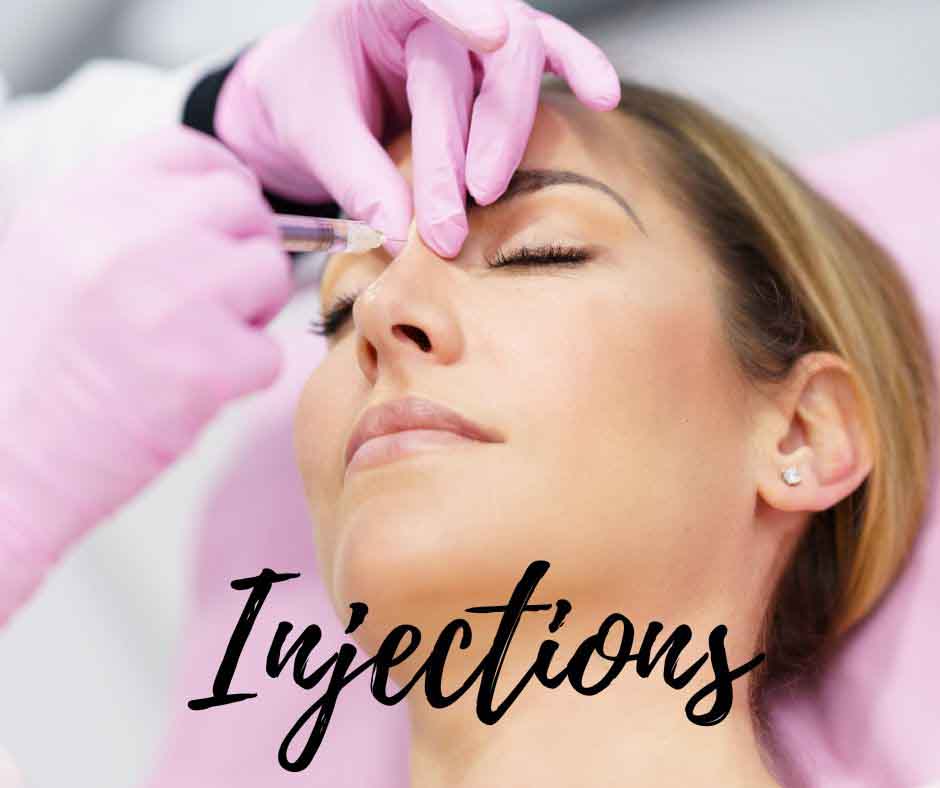
Non-surgical rhinoplasty is known as a non-surgical nose job, medical rhinoplasty, or simply nose injections. It involves changing the shape of the nose without surgery by adding hyaluronic acid by injection. This aesthetic medicine technique makes it possible to refine the tip of the nose or conceal a nasal hump without having to go through an operation or having to endure an extended period of convalescence.
Patients who desire non-surgical rhinoplasty should have realistic expectations and understand the need for periodic re-injections to maintain their desired appearance.

Hyaluronic acid is naturally present in our bodies. It plays a crucial role in hydrating the skin. Hyaluronic acid acts like a sponge retaining water, preserving the elasticity and tone of the skin.
Dr. Chen Lee performs his non-surgical rhinoplasty with injections of commercial hyaluronic acid fillers from Galderma. Galderma is a distributor of the leading and most popular brand of hyaluronic acid fillers in Canada. These injectable fillers do not contain animal protein minimizing the allergy risk. In addition, they are all 100% biodegradable.
Surgical rhinoplasty changes the external appearance of the nose by manipulating the structural anatomy of the nose. More specifically, a rhinoplasty surgeon can remove, add, or recontour the nasal cartilage or bone to permanently change the nose to a new desired shape.
Non-surgical rhinoplasty does not change the nasal anatomy. Reduction of tissue and reshaping of cartilage is not possible with non-surgical methods. Instead, the technique of non-surgical rhinoplasty aims to alter the external appearance of the nose by adding material to camouflage existing nasal traits.
Non-surgical nose injections are especially effective in nasal deformities with deficiencies, where the addition of filler by injection serves to conceal the deformity. A low nasal bridge and small nasal hump are classic deformities that respond well to nose injections.
In contrast, patients with deformities arising from excess nose dimensions such as a bulbous tip and wide nasal base are poor responders to non-surgical rhinoplasty. Adding filler material by nose injection will exacerbate the deformity in noses of excess dimension. These noses can only benefit from the surgical reduction of tissue to reduce its excessive dimension.
A well-performed surgical rhinoplasty offers a definitive and permanent change in the desired shape of the nose. In addition, functional airway obstruction can be addressed during the same nasal procedure. However, the benefits of surgical rhinoplasty must outweigh the risk, cost, and convalescence associated with surgery.
Non-surgical rhinoplasty with the use of injectable hyaluronic acid fillers is an alternative for people looking for defined, limited, and temporary nasal enhancements. Dr. Chen Lee recommends using well-known brands of hyaluronic acid fillers such as those from Galderma. The duration of the effect following non-surgical rhinoplasty is unique to each case. Most injections of hyaluronic acid are resorbed in the year following injection. To maintain the desired appearance of the nose, periodic re-injections are required at 6 to 12-month intervals. Furthermore, it is not possible to improve the respiratory function of the nose using injectable fillers.
Although not a substitute for cosmetic rhinoplasty, non-surgical rhinoplasty offers a less invasive procedure, performed in 15 minutes, lower expense, with a minimal recovery period, less discomfort, and does not require a specialized surgical facility (e.g. hospital or surgery center).
Treatment Considerations

- A nose injection can often be performed during the initial visit.
- The procedure is usually performed in the office.
- Your plastic surgeon must perform a physical examination to determine if your unique facial features will respond to a nose injection.
- You must be in good health without bleeding abnormalities.
- Most patients require 1 syringe of hyaluronic acid.
- The nose injection requires 15 to 20 minutes to perform.
- Results are immediately apparent.
- After the injection, you can return to school/work.
- Reframe for facial cosmetics for 1 day.
- Avoid exercise for 2 days.
- Avoid alcohol, aspirin, and nonsteroidal anti-inflammatory medications for 1 week.
- Avoid facial heat exposure (sauna, spa, sun) for 1 week.
- Swelling and bruising (if any) will spontaneously improve 2-5 days after non-surgical rhinoplasty.
- During the first few days, you may feel some mild discomfort. This will soon subside. Oral Tylenol and topical cool compresses are safe and can provide relief.
Bruises may appear at the injection sites. The nose may be a little swollen for a few days.
Infection and skin necrosis are exceedingly uncommon. Even blindness has been reported following the injection of hyaluronic acid into the face.
If you have discomfort, do not hesitate to contact our office.
Financing & Convalescence

During your consultation, Dr. Chen Lee will evaluate your nose and face to determine if your anatomy will favorably respond to a non-surgical rhinoplasty. Furthermore, he will seek to understand your goals and expectations. If you are a candidate, details of technique, filler, risks, and the price will be discussed. Many patients choose to have their non-surgical rhinoplasty at that initial visit.
The price of non-surgical rhinoplasty is proportionate to the quantity and type of hyaluronic acid used. Most non-surgical rhinoplasty patients use 1 syringe of filler. Each syringe of hyaluronic acid filler is priced at $700 to $800 + tax per 1 ml quantity. Prices do not include revision costs. If you request a touch-up, you will be charged fees associated with each extra syringe opened.
Payment for injections is made on the same day as your appointment. Our office accepts payment in cash, certified checks (bank drafts), Interac, or Visa / Mastercard credit cards. We also work with an independent credit company that offers financial payment plans for cosmetic surgery procedures. However, you should be aware that the interest rates and administration fees of this specialized company are higher than traditional financial institutions. It is often better to negotiate a loan through your personal bank or financial institution. We encourage you to do your homework and compare the true financial cost of these various financial options.
The results of non-surgical rhinoplasty are immediately visible. Bruising, swelling, and minor irregularities subside spontaneously in the first week following treatment.
Following nose injection, most patients can return to their usual activities. Facial cosmetics should be avoided for 1 day. Foundation to conceal bruising can commence the next day.
The longevity of a hyaluronic acid injection varies from person to person. Visible changes diminish gradually over time. While some of our non-surgical rhinoplasty patients describe visible benefits for up to 1 year, many request a “top-up” nose injection 6 – 8 months after the initial office procedure.
FAQ – NON-SURGICAL RHINOPLASTY
A non-surgical rhinoplasty can be combined with other injectable treatments, such as wrinkle relaxers. Following treatment, you can resume your normal activities.
It is normal to have questions. Below are the most frequently asked questions about nose injections. It may help in deciding whether non-surgical rhinoplasty is right for you.
Patients who desire non-surgical rhinoplasty should have realistic expectations and understand that results are limited and temporary. Periodic re-injections at 6 to 12-month intervals are necessary to maintain the desired appearance.
Furthermore, it is not possible to improve the respiratory function of the nose using injectable fillers.
Nose injections are especially effective in nasal deformities with deficiencies, where the addition of filler by injection serves to conceal the deformity. A low nasal bridge and small nasal hump are classic deformities that respond well to nose injections.
In contrast, patients with deformities arising from excess dimensions such as a bulbous tip and wide nasal base are poor responders to non-surgical rhinoplasty. Adding filler material by nose injection will exacerbate the preexisting excessive dimension. These noses can only benefit from the surgical reduction of tissue to reduce its excessive dimension.
Patients with nasal asymmetry, thick skin, and scarred skin also do not respond well to nose injections.
Although not a substitute for cosmetic rhinoplasty, non-surgical rhinoplasty offers a less invasive procedure, performed in 15 minutes, lower expense, with a minimal recovery period, less discomfort, and does not require a specialized surgical facility (e.g. hospital or surgery center).
- Avoid nonsteroidal anti-inflammatory medications (ASA, ibuprofen, Advil, Motrin) 2 weeks prior to a non-surgical nose job.
- Arrive at our office with a freshly cleansed face (SpectroJel), no facial cosmetics, no facial cream
No. The procedure is not painful. Topical anesthetics are not necessary as the injected hyaluronic acid already contains a local anesthetic. Some patients experience skin tightness for 1-3 days.
The injected hyaluronic acid filler contains a local anesthetic that will diminish the sensation to the nasal skin after your non-surgical rhinoplasty. Your skin sensation will return to normal when the local anesthetic wears off (usually within 2 hours).
The longevity of the hyaluronic acid injection varies from person to person. The visible changes diminish gradually over time. While some of our non-surgical rhinoplasty patients describe visible benefits for up to 1 year, many request a “top-up” nose injection 6 – 8 months after the initial office procedure.

